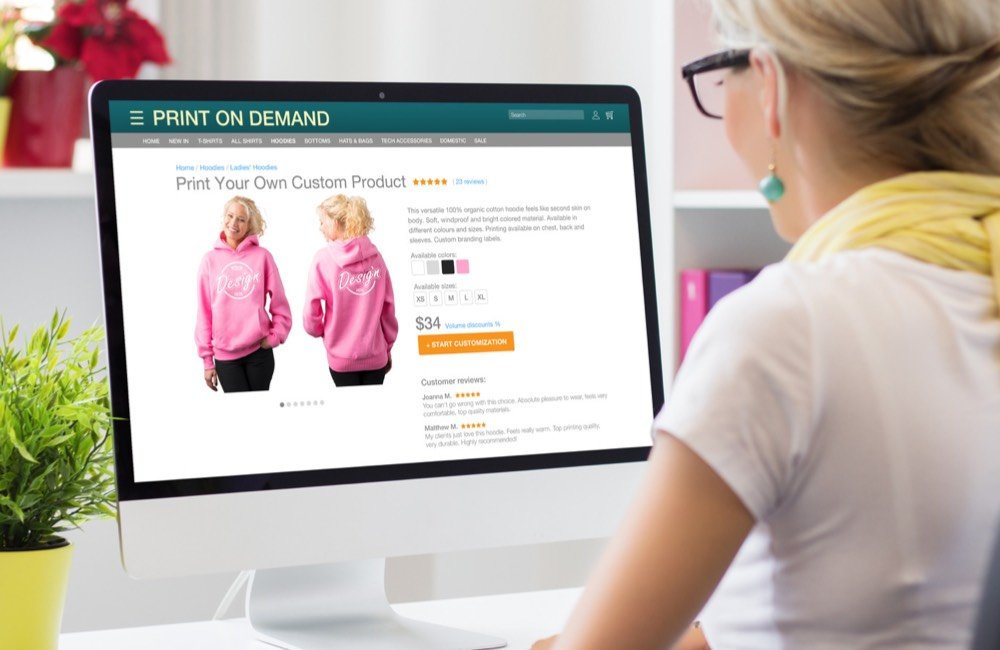No inventory, low costs to start the business, and fast shipping? That sounds like the ultimate dream, but that is exactly what you get with a Print on Demand (POD) business.
As alluring as the idea may be, a business is still a business at the end of the day, and one as seemingly gimmicky as POD can take a turn for the worse if not done right.
Even before you start acquiring customers or think of a marketing plan, you need to have a few basics in place.
What are those basics? Glad you asked. This guide will walk you through the eight things you should know before starting a Print on Demand business.

Table of Contents
1. Don’t sell only T-shirts
T-shirts are probably the first thing to come to mind when you think of a POD business, but you can go way beyond that. You can design your own backpack, phone case, water bottle, journal, or fridge magnets.
Other accessories like hoodies and leggings do just as well, and you can carve out a niche for yourself by choosing a not-so-popular product.
2. Create a mobile-first experience
First, you have to understand why there is a demand for such products and where traditional retail fails to meet consumers’ expectations.
Consumers like personalization, seamless checkout, detailed product information, excellent customer service, and post-purchase engagement.
And retailers can meet most of these expectations by adapting to how modern customers shop – via smartphones.
In 2020, 44% of shoppers used their smartphones for shopping or researching while in stores. It’s evident that the smartphone is the go-to resource to shop or to discover more information.
However, most retailers still resort to the same old in-store marketing techniques. If you want your POD business to truly succeed, you need to create a mobile-first design for your website. If you run a blog, make sure the design for mobile is not an afterthought.
You should also be available on mobile-first platforms like Instagram and Facebook to field queries and showcase your products.
3. Don’t offer too many SKUs
While that may sound counterintuitive, too many Stock-Keeping Units (SKUs) are not good for a POD business. More options do not mean more sales.
When confronted with too many choices, consumers suffer from what is known as choice overload. According to Kellogg Insight, “Choice overload is the negative effect too many choices can have on you emotionally, psychologically and behaviorally.”
So, instead of having too many options, stick to a maximum of 5 designs. Test how your target audience reacts to these designs, and then make a conscious decision to scale down or up.
4. Be sure you can ship internationally
Before opening up your business globally, make sure the POD fulfillment services you work with are operational internationally.
Fulfillment services often work with third-party providers, and the logistics are dependent on these third-party services. This means production time can vary by country, and so can the availability of specific designs and colors.
Make sure you know that you are able to serve customers globally before you announce international shipping.
5. Set aside some disposable income
A POD business has low start-up costs, and you don’t have to spend money unless your customers place an order, but you still need to set aside some cash.
The money paid by the customer can take several days to arrive in your account, which can hold up purchase orders for other customers. If disposable income is not an option, get a credit card.
Credit card cycles have a monthly billing cycle. So, you can pay off your bills once you receive the money from your customers, and you don’t have to wait to place new orders.
6. Avoid infringing Copyrights
There is a saying, “There is no such thing as an original idea.” If you’ve thought of it, chances are someone else thought of it too. Ensure the design or slogan you’re trying to make a profit from has not always been copyrighted.
You cannot replicate a design and sell it, but you can be inspired by the design and create your own version of it as long as it looks visually different.
To check whether a phrase has been trademarked, first, you need to understand what trademark and intellectual property truly mean. Every country has its own trademark search engine, and a search can reveal whether the phrase you want to use is already trademarked.
7. Use ‘real’ people for your product images
Mockups are great when you start your design process, but not so much when it comes to selling your design online. Using ‘real’ people sporting your design is a great way to acquire more customers.
But if you can’t find real people, you can always use online tools that will place your design or phrase on models. AdEspresso listed 5 of the best Facebook ads, and 2 out of 5 had a person in it. So there is some truth to taking the extra effort and creating product images with real models.
8. Offer limited stocks
Limited stocks send a powerful signal to people that not only are your designs great, which is why you’re selling out quickly but also that they have the chance to own something unique that not many people have.
You can perform market research on your target audience to see if this is a profitable business idea.
All things considered
A print-on-demand business has its fair share of pitfalls but can be profitable if you do it right. Find your niche and something you are passionate about and start selling. You have less at stake compared to a regular business, so it is worth a shot.